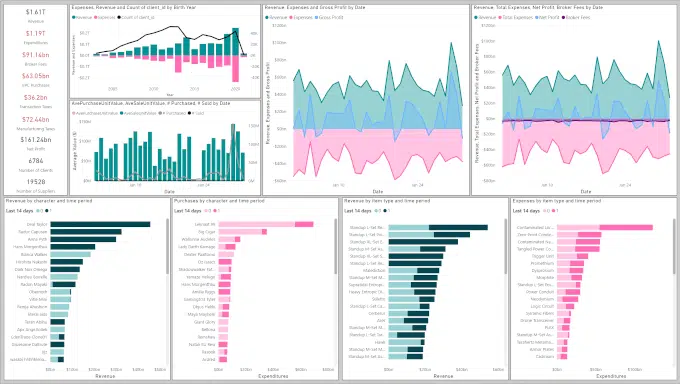Episode 20
Business intelligence is a commonly misunderstood buzzword. Intelligence is the ability to acquire and apply knowledge and skills. Applying intelligence in the context of business is all about the what, why, and how of the decision-making process. Leaders are looked upon for certainty and confidence, yet uncertainty is inescapable. Increasingly organizations are turning to data to make better decisions. However, converting data into knowledge and skills, and applying that intelligence into an improved decision-making process is no easy task.
Business intelligence is a process that commonly employs data to manage uncertainty. Traditionally, decision makers would be reliant on their intuition alone. The human mind is amazing, but it is optimized for a very different environment from our modern workplace. We are limited to our senses and our minds have limited bandwidth. Despite the limitations, we have little trouble acting on little information (at least compared to current implementations of machine learning systems), making this ability one of our core strengths. Modern organizations typically have the opposite problem, they contain too much information.
When tackling messy problems, there are numerous moments in my life when early assumptions were rendered false after some exploration. This realization can be exciting and humbling, and each time it was a lesson in the limitations of my perception. Business intelligence is commonly linked with the idea of data driven decision-making. This is a noble goal, however, where I believe organizations struggle, is that they fail to realize that this system adds a layer of complexity into the process, but does not completely remove the limitations of our intuition. Instead business intelligence systems require a different set of assumptions and will continue to rely upon our intuition. The new system augments our perception with data captured through measurements of the system, but this additional layer comes with its own set of limitations and challenges.

If the business intelligence system is an extra layer, what exactly is it? Most often it is a digital representation or model of a system we want to manage. Let’s say we are in the business of predicting coin flips. Heads or tails. Our intuition would say that there is an equal probability for the coin to land on either heads or tails. For each prediction we have a 50% chance of being correct. Let’s assume market forces shift, requiring an accuracy level greater than 50%. If we wanted to add a business intelligence layer to this system, we would begin by constructing a model of this system and start collecting data. With some trial and error, it would become clear that a coin flip is not random, but deterministic when enough initial conditions are known. With better knowledge of the system a better decision-making process can be implemented, however, no matter how sophisticated the model, it will never perfectly represent reality. While I do not see coin flipping prediction as a service (CFPAAS) as the next unicorn business opportunity, the process is no different when predicting sales, market prices, customer satisfaction, churn, productivity, etc. The development of such systems are part art and part science, and still reliant on our intuition to construct. The knowledge and skills required to build such models are vastly different from traditional decision-making processes that relied on intuition derived from lived experience. With increasing abstractness within a model, the new difficulty decision makers will have is mapping the model results to actionable insights.
Harnessing data within your organization to drive better decision-making should be a priority. It is important to reflect on how decisions are currently being made at your organization. Is it purely based on experience and intuition? If data is included, what weight is it given? What assumptions were made in the development of the model? Have the limitations been identified? Are the results taken for granted and; how deeply are the assumptions debated? If business intelligence processes are new to your organization, what problem would a data driven decision-making process solve? What information sources are available? What indicators, if measurable, would provide insights that would facilitate a better decision? Can the system be accurately described? Are there skills inside the organization to effectively answer these questions? How does this system integrate with the existing decision-making process? Business intelligence is another tool that can aid the decision-making process, but like any tool, its value is derived by users who understand its strengths and limitations.
Last Updated: July 10, 2025



